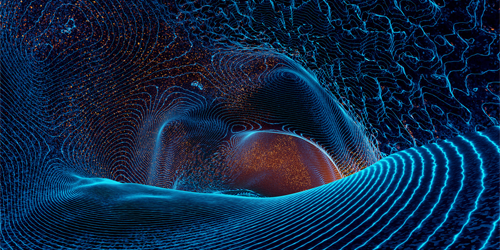Explaining Matter-Antimatter Imbalance with Gravitational Waves
Many cosmologists look to a model called the seesaw mechanism to explain both the Universe’s preponderance of matter over antimatter and why the three flavors of neutrinos are so light. The seesaw mechanism resolves these big questions by introducing a yet-unobserved particle known as a sterile neutrino, which is far more massive than the known neutrino flavors. In new theoretical work, Graham White of TRIUMF, Canada, and colleagues propose a method to test the model indirectly using gravitational-wave observatories due to come online in the next decade and beyond. Direct observation is impossible for now, as producing sterile neutrinos experimentally would require a particle accelerator many orders of magnitude more powerful than the Large Hadron Collider.
If sterile neutrinos behave as theorized, then lepton number is not conserved, and sterile neutrinos created in the early Universe could have decayed more readily into particles than antiparticles. One consequence of this, White and colleagues show, is the formation of structures called cosmic strings immediately before the period of cosmological inflation. These structures are essentially topological defects in spacetime, and as they evolve, they produce gravitational waves. The researchers estimate that the resulting gravitational waves should be of a magnitude detectable by future observatories such as the Square Kilometer Array, due online in the mid 2020s, and the Laser Interferometer Space Antenna, to be launched in 2034. Seeking the waves could complement other proposed indirect tests of the seesaw mechanism, such as searching for high-energy neutrinos also produced by cosmic strings, and more precisely determining the masses of the known neutrinos.
This research is published in Physical Review Letters.
–Sophia Chen
Sophia Chen is a freelance science writer based in Tucson, Arizona.





